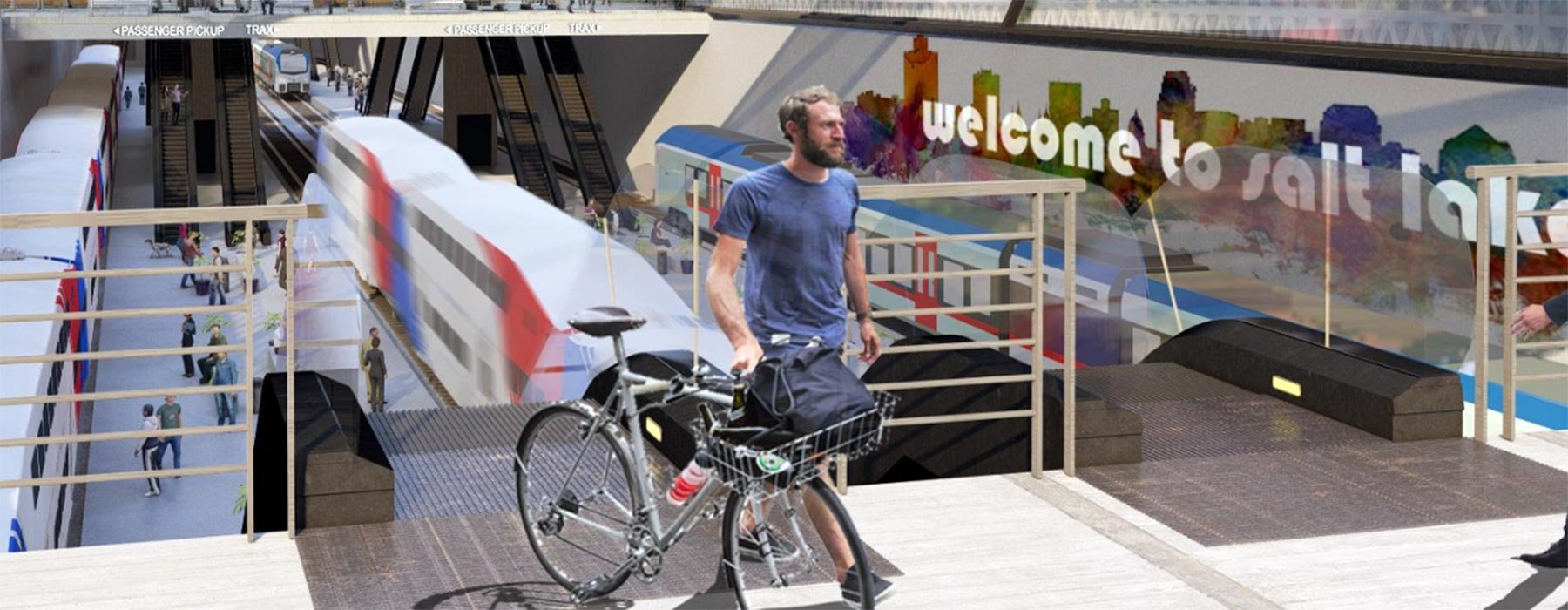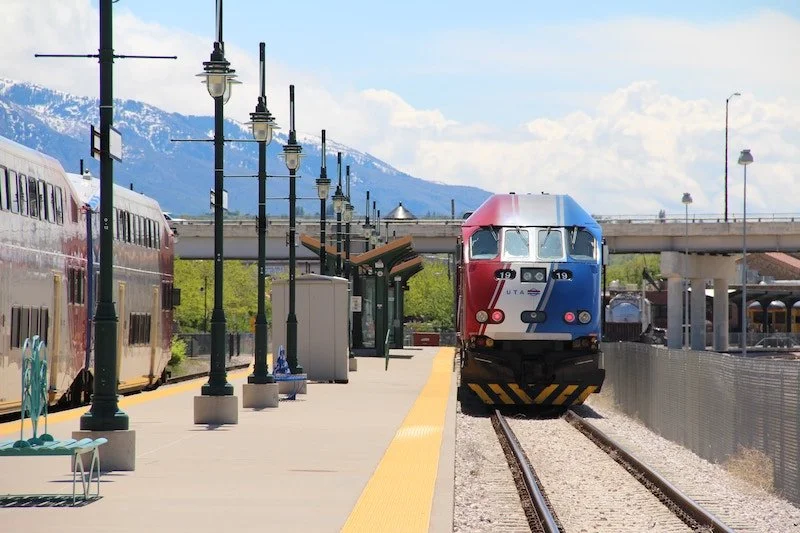
The Rio Grande Plan
A Citizen Proposal to Restore Rail Service to the Rio Grande Depot and reconnect our divided community
Renderings & images courtesy of riograndeplansaltlakecity.org
The Rio Grande Plan is designed to restore the rail service back to the historic Rio Grande Depot, bury the rails along 600 W, and improve transportation in Salt Lake City.
WHY IT MATTERS
There are numerous benefits to the Rio Grande Plan. Burying the rails along 600 W would remove a dangerous barrier between the east and west sides of Salt Lake City. Removing those rails would open up around 75 acres of land to be redeveloped into new and beneficial spaces. Relocating the rail service to the Rio Grande Depot would make the city more walkable, encouraging public transportation. The list goes on!

FAQs
Information courtesy of riograndeplansaltlakecity.org
-
No. This is a citizen-proposal, which means it was proposed by citizens of Salt Lake City who want to influence future decisions by state and city leaders.
-
Union Pacific Railroad has not yet made any public comment on the Rio Grande Plan. Obviously, the success of the plan is highly dependent on their cooperation. The Rio Grande Plan is based heavily on projects which Union Pacific partnered on, such as the ReTRAK project in Reno, NV, and the sale of the Burnham rail yards in Denver, CO. The dimensions and grades of the Rio Grande Plan’s ‘train box’ were all designed to meet Union Pacific’s standards, and further refinements can be made to suit the railroad’s needs.
Ultimately, we believe this project will be a net positive for all parties involved, including Union Pacific Railroad. The closure of 4 railroad crossings will mean fewer accidents, fewer delays, fewer trespassers, and less maintenance costs. We do not believe any organization should be coerced into a project that it does not find beneficial, and we will continue to make modifications to the Rio Grande Plan until all affected parties can agree to participate.
-
There is no question that the train box below 500 West will require ventilation of some kind. Though electrification of UTA’s commuter rail system is anticipated in the future, at present UTA, Union Pacific, Amtrak, and other rail service providers operate exclusively with diesel locomotives. The emissions of these locomotives will need to be vented in one of two ways.
The first alternative is a passive ventilation option, which would require a series of ventilation shafts to be constructed in a raised median along 500 West. The second alternative is an active ventilation system, which would see large fans mounted on the ceiling of the train box to push exhaust gases down the length of the covered portion. Most likely is that a combination of these techniques will be used to ensure that the train box is filled with fresh air, and that the neighborhoods on either side of 500 West are not impacted.
The total length of the covered portion of the train box will be approximately 1 mile in length, which is shorter than many railroad tunnels currently in operation in the United States. The mechanics of providing clean are into tunnels is well understood, and should be incorporated into the design of the train box from the beginning.
-
The Rio Grande Plan seeks to improve the infrastructure of every neighborhood it touches, and the green space west of the Gateway is no different. At present, the former rail ROW west of the Gateway is preserved as a grassy median with large trees. This area will unfortunately need to be excavated for the construction of the new train box, but this disruption also presents an opportunity in what is put back when construction is finished.
Because of the railroad tracks needing to ‘ramp up’ to surface level at this location, the median of 500 West will need to be raised no more than 9 feet on the north end (the south end will not need to be raised at all). This will create a unique opportunity for landscaping, such as grass, water features, raised planters, and potted trees. The raised nature of the park can be utilized to create a railroad viewing area, following the pattern of other ‘railfan parks’ across the country.
Ultimately, the design of this area will be up to city and neighborhood leaders to agree upon. So while a change in the area will be required in order to accommodate the Rio Grande Plan, careful planning and coordination can ensure that all changes can be positive.
-
Ground water is a real concern that many projects in Salt Lake City have dealt with in various ways. For instance, the underground parking garages for the Gateway shopping center – which are located immediately east of the proposed Rio Grande Plan ‘train box’ – use a mix of sealants and sump pumps to keep their parking areas dry. Similar solutions can be applied to the proposed ‘train box’ to ensure that tracks are always kept clear and dry.
-
The Rio Grande Plan was designed from the beginning to allow for generous grades into and out of the train box below 500 West. The maximum grade for Union Pacific tracks was limited to 1%, or 1 foot up per 100 feet forward. The maximum grade for UTA tracks is 2.5%.
Both of these grades satisfy their respective railroad’s design criteria. Grades will not be an issue in the implementation of the Rio Grande Plan.
On the north end, it is anticipated that the UTA tracks will reach surface level immediately south of the North Temple Bridge station, while the Union Pacific tracks will take until just south of the 300 North crossing to fully reach the surface. On the west end, the Union Pacific connector track will reach surface by 900 West. 800 West street will closed at the railroad crossing, but will be diverted to a new east-west alignment below Interstate-15 at 50 South. On the south end, there are no constraints, and the ramp may continue as long as necessary.
-
Submit a question via to riograndeplansaltlakecity@gmail.com
STATEMENT OF SUPPORT
The RDBA is invested in advocating for the Westside, and championing initiatives that will benefit westside businesses and residents. The RDBA recognizes The Rio Grande Plan to be one such initiative, and we are dedicated to supporting it in all the ways we can.
How can I get involved?
ACTION YOU CAN TAKE NOW
» Share The Rio Grande Plan with family & friends. Make it a household topic!
» Ask your legislator to pay attention to this plan and advocate for it.
Reach out if you have questions about RDBA’s support of The Rio Grand Plan and ways you can be an advocate.
In the News
Learn more from the authors
The Rio Grande Plan was developed and is advocated by Christian Lenhart, Cameron Blakely and Matt Givens.
See all the maps, renderings, plans and details at The Rio Grande Plan website.










